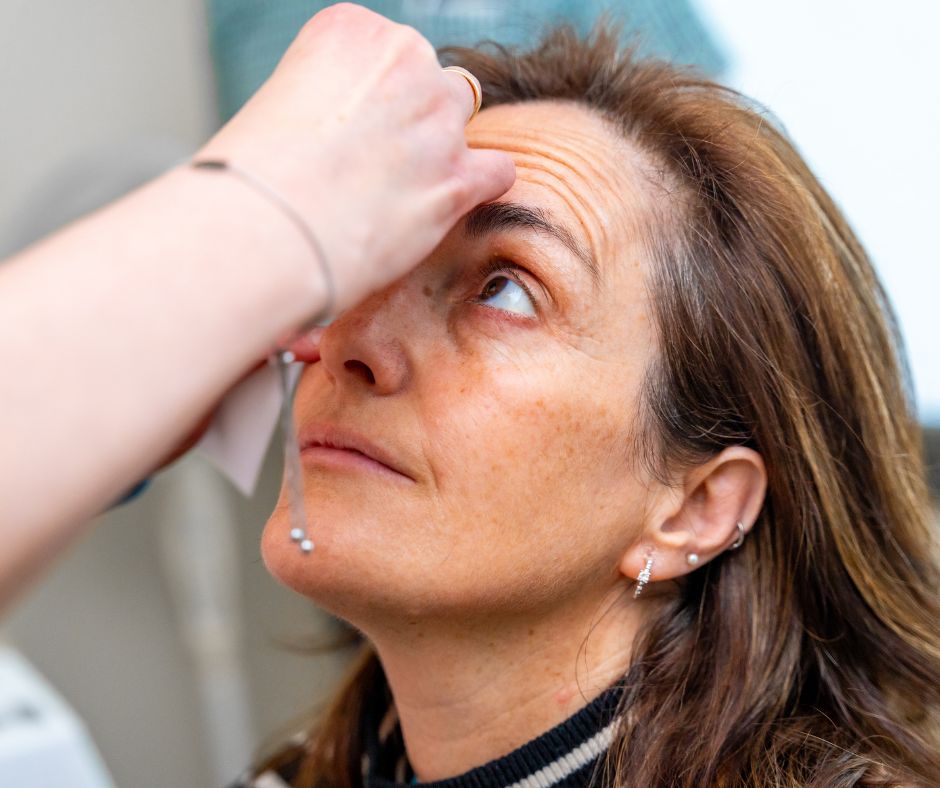
10 Jun Understanding Thyroid Eye Disease
Thyroid eye disease refers to a condition that damages the eyes due to the thyroid. It can make your eyes swell, dry, red or even bulge out. Many get it if they have thyroid issues such as Graves’ disease. It affects both men and women, but is more common in women. Signs can progress slowly or rapidly and eye care is required. Continue reading for a discussion of symptoms and care options.
What Is Thyroid Eye Disease?
Thyroid eye disease, or TED, is an autoimmune disease where the immune system targets the tissues and muscles surrounding the eyes. This causes the tissue to dry out, which inflames the eyes, making them swollen, red and uncomfortable. TED is most commonly associated with Graves’ disease, an autoimmune disorder that makes your thyroid gland go into overdrive. Approximately 85% of individuals with TED have Graves’ disease.
TED presents mostly in adults from 30 to 50 years old, and affects children less frequently. The risk is greater for women, smokers, and those with badly controlled thyroid issues. Certain thyroid treatments, such as radioactive iodine therapy, increase the risk as well.
Recognizing The Symptoms
Thyroid eye disease can present itself in various forms, however, identifying the symptoms early reduces the likelihood of chronic complications. Most patients with this condition initially experience mild symptoms such as itchy or dry eyes. Sometimes, it gets hard to wear contacts because the eyes feel sore or gritty. If you have a family history of thyroid issues, smoking, or low selenium blood levels, you’re at an increased risk for developing it.
The most common symptoms include:
- Dry, itchy, or gritty feeling in the eyes
- Swelling or redness around the eyes
- Watery eyes/feeling like there is something in the eye
- Trouble wearing contact lenses
- Bulging eyes (also called proptosis)
- Pain, especially with eye movement
- Double vision, or seeing two images at once
- Light sensitivity
- Trouble closing the eyes all the way
As the disease progresses, more severe symptoms can emerge. Double vision, pain with eye movement, and difficulty seeing in bright light are all signs that the disease has advanced. In others, the eyes can remain bulged or appear crossed following the reduction of the swelling. This can alter someone’s appearance and be long-lasting.
Only around 5-6% of Graves’ patients develop moderate to severe thyroid eye disease. If left untreated, the disease can damage the optic nerve, cornea, or retina and potentially cause vision loss. Symptoms frequently worsen over the first 6 to 12 months, but then stabilize or improve.
Modern Treatment Approaches
Treatment for thyroid eye disease (TED) is tailored to the individual and depends on the severity of symptoms, the phase of the disease (active vs. stable), and how much it affects vision and quality of life.
Mild Cases
Most mild cases are managed with supportive care. Lubricating eye drops (artificial tears) and ointments help combat dryness, irritation, and the gritty or scratchy feeling caused by eyelid retraction or reduced blinking. These are available over-the-counter and can be used several times a day.
Cool compresses can help reduce puffiness or inflammation. Elevating the head while sleeping may minimize overnight swelling. Wearing sunglasses outdoors protects from light sensitivity and wind irritation. Selenium supplementation may help in mild cases, particularly in patients with low selenium levels, as some studies suggest it can slow disease progression and reduce symptoms.
Moderate To Severe Cases
In more active and moderate-to-severe cases, medical therapy is the mainstay of treatment. Corticosteroids, such as prednisone or intravenous methylprednisolone, are used to quickly reduce inflammation. These are generally prescribed for short durations to limit side effects like weight gain, mood swings, and elevated blood sugar.
Teprotumumab (Tepezza) is the first FDA-approved drug specifically for TED. It’s an intravenous infusion given every three weeks over a 24-week period. Tepezza targets the insulin-like growth factor-1 receptor (IGF-1R) and has shown effectiveness in reducing eye bulging (proptosis), double vision (diplopia), and inflammation.
Immunosuppressive medications like mycophenolate mofetil or methotrexate may be considered in certain patients, particularly when corticosteroids are not tolerated or effective. Radiation therapy may also be used in select cases to reduce inflammation, particularly in patients with double vision due to muscle involvement.
Surgical Options
Surgery is typically reserved for the “inactive” phase of TED—once the inflammation has stabilized—but it may be urgently considered if there is optic nerve compression threatening vision. Orbital decompression surgery creates more space in the eye socket to relieve pressure and reduce bulging. It may involve removing part of the bone or orbital fat. Eyelid surgery can address lid retraction and improve eye closure, reducing dryness and exposure-related discomfort.
Conclusion
Individuals cope with TED in different ways. The symptoms can appear gradually or quickly. Swollen eyelids, red eyes and shifts in vision can impact work, daily activities, and even your mood. Great care begins with recognizing symptoms and consulting an optometrist sooner. New treatments allow people to live with less pain and stress. To find the best care, reach out to Dr. D’Orio Eyecare today. Visit https://drdorioeyecare.com/book-appointment/ or call us at 416-656-2020 for our Toronto location, or 416-661-5555 for our North York location.


